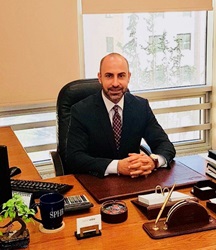HR Leads Business recently caught up with Murad Sahawneh, SPHR, GPHR, SPHRi, Global HR Business Manager for Arab Bank.
What’s new in your HR career? In my recent global consultancy role and in response to ever-constant business changes, I am required to stay credible to be an active key player. My achievements are seen in the successful partnerships I have accomplished across HR disciplines to deliver top-value HR services to management and employees, reflecting the institution’s strategic direction and objectives.
to ever-constant business changes, I am required to stay credible to be an active key player. My achievements are seen in the successful partnerships I have accomplished across HR disciplines to deliver top-value HR services to management and employees, reflecting the institution’s strategic direction and objectives.
How has HRCI certification benefited you? Being HRCI-certified has helped me become an HR resource who is more credible, recognized and respected by my senior business leaders. With its competency-based credentials, HRCI certifications validate my expertise as a senior HR professional, and provided me with the ability to contribute to the HR industry and business communities. I received my first promotion immediately after I earned my first HRCI credential back in 2009. And with more certifications, I became even more visible to potential employers and a highly compensated professional in the HR field.
What advice would you give future HRCI certification holders? Keep your certification(s) current as proof of solid competence in a fast-changing business environment.
What are your future goals? My future goals are to remain committed and continue to play an active role in shaping HR principles and professional practices around the world.
What HR initiative at your organization are you most proud of? The initiative that I am most proud of was designing a competency model that truly made senior management and employees accountable and self-motivated for the institution’s talent development.
What were the core areas that you focused on in developing a new competency model? The competency model comprised of four-stage development interventions to address talent needs and career growth.
Sahawneh provided HR Leads Business with a description of the four development stages:
What was the key to success? The involvement of all key stakeholder with the design, including getting management and employees to sign off on the development plans identified, and ongoing communication about progress and behavioral changes that deliver the set objectives.
What does the future hold for HR? With the advanced technology available now, along with the challenges of managing workforces across countries and the need for HR to add value through metrics and business-related data, I think the future will require more HR leaders who are able to grow their people and manage change effectively through them.